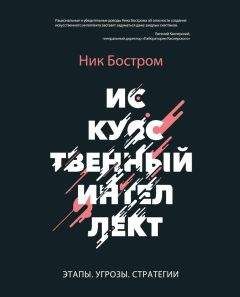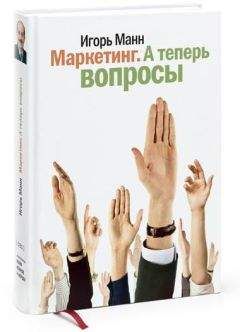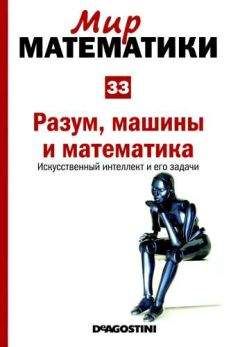Stewart et al. 2008 — Stewart P. W., Lonky E., Reihman J., Pagano J., Gump B. B., Darvill T. The Relationship Between Prenatal PCB Exposure and Intelligence (IQ) in 9-Year-Old Children // Environmental Health Perspectives, 2008, 116 (10), p. 1416–1422.
Sun et al 2012 — Sun W., Yu H., Shen Y., Banno Y., Xiang Z., Zhang Z. Phylogeny and Evolutionary History of the Silkworm // Science China Life Sciences, 2012, 55 (6), p. 483–496.
Sundet et al. 2004 — Sundet J., Barlaug D., Torjussen T. The End of the Flynn Effect? A Study of Secular Trends in Mean Intelligence Scores of Norwegian Conscripts During Half a Century // Intelligence, 2004, 32 (4), p. 349–362.
Sutton, Barto 1998 — Sutton Richard S., Barto Andrew G. Reinforcement Learning: An Introduction. Adaptive Computation and Machine Learning. Cambridge, MA: MIT Press, 1998.
Talukdar et al. 2002 — Talukdar D., Sudhir K., Ainslie A. Investigating New Product Diffusion Across Products and Countries // Marketing Science, 2002, 21 (1), p. 97–114.
Teasdale, Owen 2008 — Teasdale Thomas W., Owen David R. Secular Declines in Cognitive Test Scores: A Reversal of the Flynn Effect // Intelligence, 2008, 36 (2), p. 121–126.
Tegmark, Bostrom 2005 — Tegmark Max, Bostrom Nick. Is a Doomsday Catastrophe Likely? // Nature, 2005, 438, p. 754.
Teitelman 1966 — Teitelman Warren. Pilot: A Step Towards Man-Computer Symbiosis. PhD diss., Massachusetts Institute of Technology, 1966.
Temple 1986 — Temple Robert K. G. The Genius of China: 3000 Years of Science, Discovery, and Invention. 1st ed. New York: Simon & Schuster, 1986.
Tesauro 1995 — Tesauro Gerald. Temporal Difference Learning and TD-Gammon // Communications of the ACM, 1995, 38 (3), p. 58–68.
Tetlock 2005 — Tetlock Philip E. Expert Political Judgment: How Good is it? How Can We Know? Princeton, NJ: Princeton University Press, 2005.
Tetlock, Belkin 1996 — Tetlock Philip E., Belkin Aaron. Counterfactual Thought Experiments in World Politics: Logical, Methodological, and Psychological Perspectives // Counterfactual Thought Experiments in World Politics: Logical, Methodological, and Psychological Perspectives / Eds. Philip E. Tetlock, Aaron Belkin. Princeton, NJ: Princeton University Press, 1996, p. 1–38.
Thompson 1997 — Thompson Adrian. Artificial Evolution in the Physical World // Evolutionary Robotics: From Intelligent Robots to Artificial Life / Ed. Takashi Gomi. Er ’97. Carp, ON: Applied AI Systems, 1997, p. 101–125.
Thrun et al. 2006 — Thrun S., Montemerlo M., Dahlkamp H., Stavens D., Aron A., Diebel J., Fong P. Stanley: The Robot That Won the DARPA Grand Challenge // Journal of Field Robotics, 2006, 23 (9), p. 661–692.
Trachtenberg et al. 2002 — Trachtenberg J. T., Chen B. E., Knott G. W., Feng G., Sanes J. R., Welker E., Svoboda K. Long-Term In Vivo Imaging of Experience-Dependent Synaptic Plasticity in Adult Cortex // Nature, 2002, 420 (6917), p. 788–794.
Traub 2012 — Traub Wesley A. Terrestrial, Habitable-Zone Exoplanet Frequency from Kepler // Astrophysical Journal, 2012, 745 (1), p. 1–10.
Truman et al. 1993 — Truman James W., Taylor Barbara J., Awad Timothy A. Formation of the Adult Nervous System // The Development of Drosophila Melanogaster / Eds. Michael Bate, Alfonso Martinez Arias. Plainview, NY: Cold Spring Harbor Laboratory, 1993.
Tuomi 2002 — Tuomi Ilkka. The Lives and the Death of Moore’s Law // First Monday, 2002, 7 (11).
Turing 1950 — Turing A. M. Computing Machinery and Intelligence // Mind, 1950, 59 (236), p. 433–460.
Turkheimer et al. 2003 — Turkheimer Eric, Haley Andreana, Waldron Mary, D’Onofrio Brian, Gottesman Irving I. Socioeconomic Status Modifies Heritability of IQ in Young Children // Psychological Science, 2003, 14 (6), p. 623–628.
Uauy, Dangour 2006 — Uauy Ricardo, Dangour Alan D. Nutrition in Brain Development and Aging: Role of Essential Fatty Acids // Supplement, Nutrition Reviews, 2006, 64 (5), p. S24–S33.
Ulam 1958 — Ulam Stanislaw M. John von Neumann // Bulletin of the American Mathematical Society, 1958, 64 (3), p. 1–49.
Uncertain Future, 2012 — Frequently Asked Questions. The Uncertain Future (Retrieved 2012, March 25; http://www.theuncertainfuture.com/faq.html).
US Congress, 1995 — U.S. Congress, Office of Technology Assessment. U.S.-Russian Cooperation in Space ISS-618. Washington, DC: U.S. Government Printing Office, 1995, April.
Van Zanden 2003 — Van Zanden Jan Luiten. On Global Economic History: A Personal View on an Agenda for Future Research. International Institute for Social History, 2003, July 23.
Vardi 2012 — Vardi Moshe Y. Artificial Intelligence: Past and Future // Communications of the ACM, 2012, 55 (1), p. 5.
Vassar, Freitas 2006 — Vassar Michael, Freitas Robert A., Jr. Lifeboat Foundation Nanoshield. Lifeboat Foundation, 2006 (Retrieved 2012, May 12; http://lifeboat.com/ex/nanoshield).
Vinge 1993 — Vinge Vernor. The Coming Technological Singularity: How to Survive in the Post-Human Era // Vision-21: Interdisciplinary Science and Engineering in the Era of Cyberspace. NASA Conference Publication 10129. NASA Lewis Research Center, 1993, p. 11–22.
Visscher et al. 2008 — Visscher P. M., Hill W. G., Wray N. R. Heritability in the Genomics Era: Concepts and Misconceptions // Nature Reviews Genetics, 2008, 9 (4), p. 255–266.
Vollenweider et al. 1998 — Vollenweider Franz, Gamma Alex, Liechti Matthias, Huber Theo. Psychological and Cardiovascular Effects and Short-Term Sequelae of MDMA («Ecstasy») in MDMA-Naïve Healthy Volunteers // Neuropsychopharmachology, 1998, 19 (4), p. 241–251.
Wade 1976 — Wade Michael J. Group Selections Among Laboratory Populations of Tribolium // Proceedings of the National Academy of Sciences of the United States of America, 1976, 73 (12), p. 4604–4607.
Wainwright, Jordan 2008 — Wainwright Martin J., Jordan Michael I. Graphical Models, Exponential Families, and Variational Inference // Foundations and Trends in Machine Learning, 2008, 1 (1–2), p. 1–305.
Walker 2002 — Walker Mark. Prolegomena to Any Future Philosophy // Journal of Evolution and Technology, 2002, 10 (1).
Walsh 2001 — Walsh Nick Paton. Alter our DNA or robots will take over, warns Hawking // The Observer, 2001, September 1 (http://www.theguardian.com/uk/2001/sep/02/medicalscience.genetics).
Warwick 2002 — Warwick Kevin. I, Cyborg. London: Century, 2002.
Wehner et al. 2008 — Wehner M., Oliker L., Shalf J. Towards Ultra-High Resolution Models of Climate and Weather // International Journal of High Performance Computing Applications, 2008, 22 (2), p. 149–165.
Weizenbaum 1966 — Weizenbaum Joseph. Eliza: A Computer Program for the Study of Natural Language Communication Between Man And Machine // Communications of the ACM, 1966, 9 (1), p. 36–45.
Weizenbaum 1976 — Weizenbaum Joseph. Computer Power and Human Reason: From Judgment to Calculation. San FrancYork, CA: W. H. Freeman, 1976.
Werbos 1994 — Werbos Paul John. The Roots of Backpropagation: From Ordered Derivatives to Neural Networks and Political Forecasting. New York: Wiley, 1994.
White et al. 1986 — White J. G., Southgate E., Thomson J. N., Brenner S. The Structure of the Nervous System of the Nematode Caenorhabditis Elegans // Philosophical Transactions of the Royal Society of London. Series B, Biological Sciences,1986, 314 (1165), p. 1–340.
Whitehead 2003 — Whitehead Hal. Sperm Whales: Social Evolution in the Ocean. Chicago: University of Chicago Press, 2003.
Whitman et al. 1998 — Whitman William B., Coleman David C., Wiebe William J. Prokaryotes: The Unseen Majority // Proceedings of the National Academy of Sciences of the United States of America, 1998, 95 (12), p. 6578–6583.
Wiener 1960 — Wiener Norbert. Some Moral and Technical Consequences of Automation // Science, 1960, 131 (3410), p. 1355–1358.
Wikipedia, 2012 a — s. v. «Computer Bridge» // Wikipedia, 2012 (Retrieved 2013, June 30.; http://en.wikipedia.org/wiki/Computer_bridge).
Wikipedia, 2012 b — s. v. «Supercomputer» // Wikipedia, 2012 (Retrieved 2013, June 30; http://et.wikipedia.org/wiki/Superarvuti).
Williams 1966 — Williams George C. Adaptation and Natural Selection: A Critique of Some Current Evolutionary Thought. Princeton Science Library. Princeton, NJ: Princeton University Press, 1966.
Winograd 1972 — Winograd Terry. Understanding Natural Language. New York: Academic Press, 1972.
Wood 2007 — Wood Nigel. Chinese Glazes: Their Origins, Chemistry and Re-creation. London: A. & C. Black, 2007.
World Bank, 2008 — Global Economic Prospects: Technology Diffusion in the Developing World. Washington, DC: The International Bank for Reconstruction and Development / The World Bank, 2008.
World Robotics, 2011 — Executive Summary of l. World Robotics 2011: Industrial Robots; 2. World Robotics 2011: Service Robots // World Robotics, 2011 (Retrieved 2012, June 30; http://www.bara.org.uk/pdf/2012/world-robotics/Executive_Summary_WR_2012.pdf).
World Values Survey, 2008 — WVS 2005–2008 // World Values Survey, 2008 (Retrieved 2013, October 29; http://www.wvsevsdb.com/wvs/WVSAnalizeStudy.jsp).
Wright 2001 — Wright Robert. Nonzero: The Logic of Human Destiny. New York: Vintage, 2001.
Yaeger 1994 — Yaeger Larry. Computational Genetics, Physiology, Metabolism, Neural Systems, Learning, Vision, and Behavior or PolyWorld: Life in a New Context // Proceedings of the Artificial Life III Conference / Ed. C. G. Langton. Santa Fe Institute Studies in the Sciences of Complexity. Reading, MA: Addison-Wesley, 1994, p. 263–298.
Yudkowsky 2001 — Yudkowsky Eliezer. Creating Friendly AI l.0: The Analysis and Design of Benevolent Goal Architectures. San Francisco, CA: Machine Intelligence Research Institute, 2001, June 15.
Yudkowsky 2002 — Yudkowsky Eliezer. The AI-Box Experiment, 2002 (Retrieved 2012, January 15; http://yudkowsky.net/singularity/aibox).
Yudkowsky 2004 — Yudkowsky Eliezer. Coherent Extrapolated Volition. San Francisco, CA: Machine Intelligence Research Institute, 2004, May.
Yudkowsky 2007 — Yudkowsky Eliezer. Levels of Organization in General Intelligence // Artificial General Intelligence / Eds. Ben Goertzel, Cassio Pennachin. Cognitive Technologies. Berlin: Springer, 2007, p. 389–501.
Yudkowsky 2008 a — Yudkowsky Eliezer. Artificial Intelligence as a Positive and Negative Factor in Global Risk // Global Catastrophic Risks / Eds. Nick Bostrom, Milan M. Cirkovic. New York: Oxford University Press, 2008, p. 308–345.
Yudkowsky 2008 b — Yudkowsky Eliezer. Sustained Strong Recursion // Less Wrong (blog), 2008, December 5.
Yudkowsky 2010 — Yudkowsky Eliezer. Timeless Decision Theory. San Francisco, CA: Machine Intelligence Research Institute, 2010.
Yudkowsky 2011 — Yudkowsky Eliezer. Complex Value Systems are Required to Realize Valuable Futures. San Francisco, CA: Machine Intelligence Research Institute, 2011.
Yudkowsky 2013 — Yudkowsky Eliezer. Intelligence Explosion Microeconomics. Technical Report 2013–1. Berkeley, CA: Machine Intelligence Research Institute, 2013.
Zahavi, Zahavi 1997 — Zahavi Amotz, Zahavi Avishag. The Handicap Principle: A Missing Piece of Darwin’s Puzzle / Transl. N. Zahavi-Ely, M. P. Ely. New York: Oxford University Press, 1997.
Zalasiewicz et al. 2008 — Zalasiewicz J., Williams M., Smith A., Barry T. L., Coe A. L., Bown P. R., Brenchley P. Are We Now Living in the Anthropocene? // GSA Today, 2008, 18 (2), p. 4–8.
Zeira 2011 — Zeira Joseph. Innovations, Patent Races and Endogenous Growth // Journal of Economic Growth, 2011, 16 (2), p. 135–156.
Zuleta 2008 — Zuleta Hernando. An Empirical Note on Factor Shares // Journal of International Trade and Economic Development, 2008, 17 (3), p. 379–390.
Список сокращений
FLOPS (floating-point operation per second) — количество операций с плавающей запятой в секунду
IQ (intelligence quotient) — коэффициент интеллекта, или коэффициент умственного развития
ВВП — валовой внутренний продукт
ИИ — искусственный интеллект
ИИЧУ — искусственный интеллект человеческого уровня
КИИ — классический искусственный интеллект
КИМГМ — компьютерная имитационная модель головного мозга
КЭВ — когерентное экстраполированное волеизъявление
МД — моральная допустимость
МП — моральная правота
ПО — программное обеспечение
УИИ — универсальный искусственный интеллект
УИИЧУ — универсальный искусственный интеллект человеческого уровня
ЭКО — экстракорпоральное оплодотворение
Благодарности
Защитная оболочка, которой окружает себя человек во время работы над книгой, остается довольно проницаемой. Многие концепции и идеи, родившиеся в процессе создания текста, каким-то образом просочились во внешний мир. В результате, став предметом широкого обсуждения, они вернулись ко мне в виде многочисленных соображений, конечно, нашедших свое место в окончательном варианте «Искусственного интеллекта». Я дотошно отслеживал, чтобы ни одно имя цитируемых мною авторов не было пропущено в аппарате книги, однако боюсь, что не смогу перечислить всех, кто оказал влияние на ход моих мыслей, — таких людей множество.





